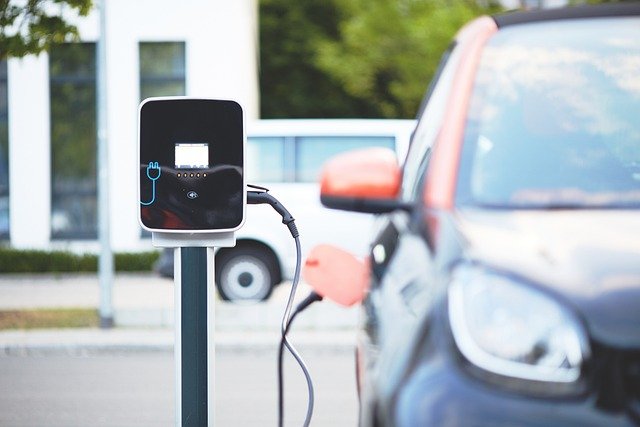Hydrogen Fuel Cell Vehicles: The Next Frontier in Clean Transportation
The automotive world is on the cusp of a major transformation, and hydrogen fuel cell vehicles (FCVs) are emerging as a promising contender in the race for sustainable transportation. While electric vehicles have dominated recent headlines, FCVs offer unique advantages that could reshape our roads and our approach to clean energy. This article delves into the intricacies of hydrogen fuel cell technology, its potential impact on the automotive industry, and the challenges it faces in becoming a mainstream solution.

The process begins when hydrogen enters the anode side of the fuel cell. A catalyst at the anode separates hydrogen molecules into protons and electrons. The protons pass through a membrane to the cathode side, while the electrons are forced through an external circuit, creating an electric current. At the cathode, oxygen from the air combines with the protons and electrons to form water vapor, which is then expelled through the vehicle’s exhaust.
Advantages of Hydrogen Fuel Cell Vehicles
One of the most significant advantages of FCVs is their quick refueling time, comparable to that of conventional gasoline vehicles. While battery electric vehicles can take hours to charge, an FCV can be refueled in just a few minutes, making them particularly attractive for long-distance travel and commercial applications.
FCVs also offer impressive range capabilities, with some models able to travel over 300 miles on a single tank of hydrogen. This eliminates the range anxiety often associated with battery electric vehicles and makes FCVs a viable option for consumers who regularly travel long distances.
Moreover, hydrogen fuel cells have a higher energy density than lithium-ion batteries, allowing for more energy storage in a smaller space. This characteristic makes FCVs an appealing option for larger vehicles like buses and trucks, where battery weight and size can be significant limiting factors.
Environmental Impact and Sustainability
From an environmental perspective, FCVs produce zero tailpipe emissions, with water vapor being the only byproduct of the fuel cell process. This makes them an attractive option for reducing air pollution in urban areas and meeting increasingly stringent emissions regulations worldwide.
However, the environmental impact of FCVs extends beyond tailpipe emissions. The production of hydrogen itself is a critical factor in determining the overall sustainability of these vehicles. Currently, most hydrogen is produced through steam methane reforming, a process that uses natural gas and releases carbon dioxide as a byproduct. For FCVs to truly be a zero-emission solution, the focus must shift towards green hydrogen production methods, such as electrolysis powered by renewable energy sources.
Infrastructure Challenges and Development
One of the most significant hurdles facing the widespread adoption of FCVs is the lack of hydrogen refueling infrastructure. As of 2021, there were only a handful of hydrogen fueling stations available to the public in most countries, with the majority concentrated in California, Japan, and parts of Europe.
Developing a comprehensive hydrogen fueling network requires significant investment and coordination between governments, energy companies, and automakers. Several initiatives are underway to expand this infrastructure, including the Hydrogen Council’s goal of deploying 10,000 hydrogen refueling stations globally by 2030.
The challenge lies not only in building the stations but also in establishing a reliable and cost-effective hydrogen supply chain. This involves developing efficient methods for hydrogen production, transportation, and storage, all of which are critical components in making FCVs a viable alternative to conventional vehicles.
Current Market and Future Prospects
While FCVs are still in the early stages of commercialization, several major automakers have invested heavily in the technology. Toyota, Honda, and Hyundai are among the leaders in this field, with models like the Toyota Mirai, Honda Clarity Fuel Cell, and Hyundai Nexo already available in select markets.
The potential for FCVs extends beyond passenger cars. The technology is being explored for use in heavy-duty vehicles, where the quick refueling times and long range capabilities of hydrogen fuel cells offer significant advantages over battery electric alternatives. Companies like Nikola and Hyundai are developing hydrogen-powered trucks, while several public transportation systems around the world are introducing hydrogen fuel cell buses.
As the technology matures and economies of scale are achieved, the cost of FCVs is expected to decrease, making them more competitive with conventional and battery electric vehicles. However, the success of FCVs will largely depend on continued technological advancements, infrastructure development, and supportive government policies.
A Piece of the Clean Energy Puzzle
Hydrogen fuel cell vehicles represent a promising avenue in the quest for sustainable transportation. While they face significant challenges, particularly in terms of infrastructure development and green hydrogen production, their unique advantages make them a compelling option for certain applications and markets.
As the automotive industry continues to evolve, it’s likely that FCVs will play an important role alongside other clean technologies. Rather than a single solution, the future of transportation may well be a diverse ecosystem of technologies, each suited to different needs and use cases. In this landscape, hydrogen fuel cell vehicles have the potential to carve out a significant niche, contributing to a cleaner, more sustainable future for transportation.





